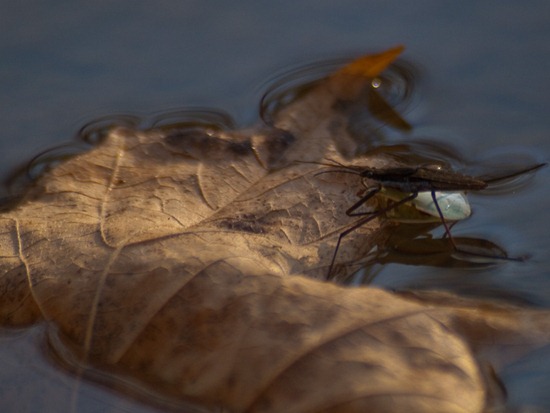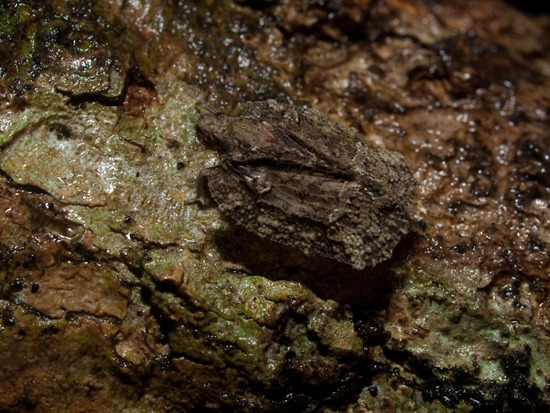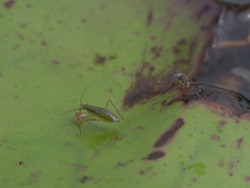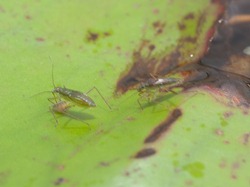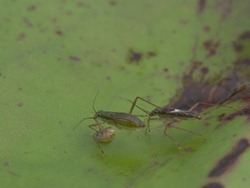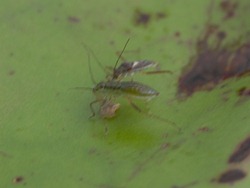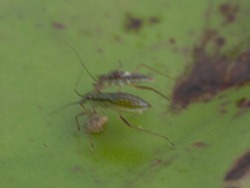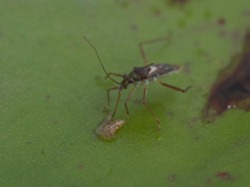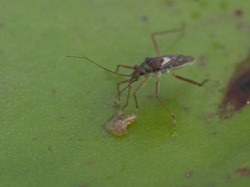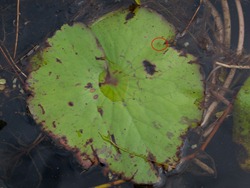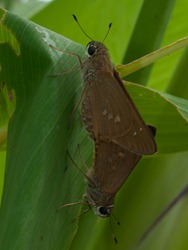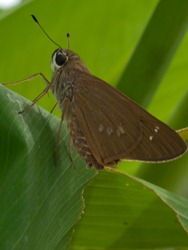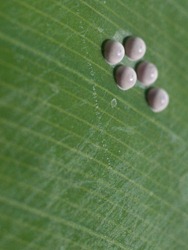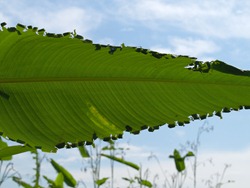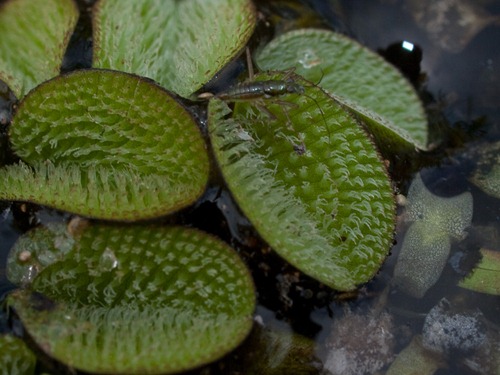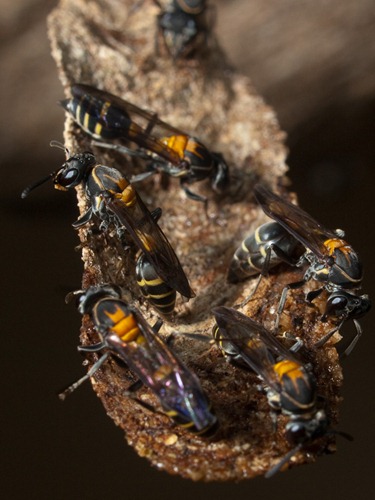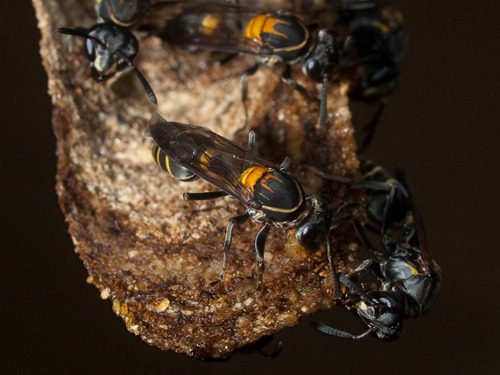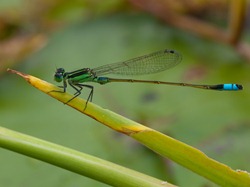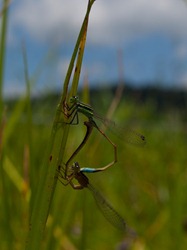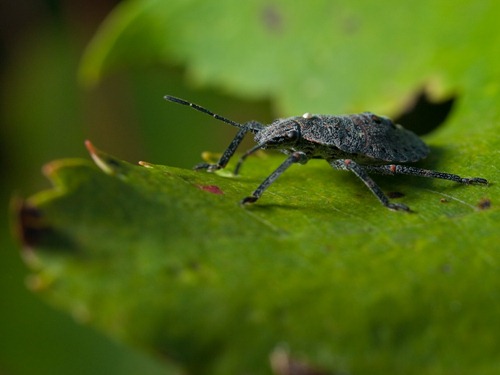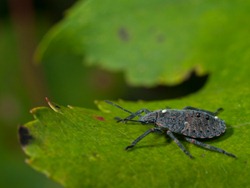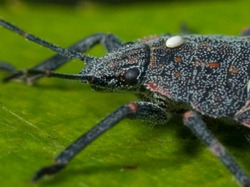That leaf hopper should not have been hanging around the water.
Tag Archives: Insects
Camouflaged insect
Insect behavior
If you’ll excuse the poor sharpness in the following sequence, I’d like to share some food stealing behavior I observed and captured between two juvenile hemipterans (mesovelids, I believe).
I also witness the red dragonfly mating, so I can now identify the female. After mating, the male took up a peculiar posture 10 cm above the female, and chased away other males as they approached (mate guarding). He continued while she deposited eggs. Soon, however, a rush of other males came in and the female took off. The original male remained and defended the area, although I’m not quite sure why. Further, the male also chased off all other dragonflies, including several individual dragonflies that were completely black, which I assume are another species.
Not green, but red
This dragonfly is now much more abundant than the green one. It’d be interesting to see if they share similar food sources and temporally separate emergence to avoid competition.
What evolutionary forces drive dragonfly color?
Hesperidae!
Hesperidae (skipper butterflies) are the Thalia herbivores, according to Tim, an IRES student currently studying termite behavior at Palo Verde.
I’ve observed both swallows (barn swallows + another I’ve yet to identify) and fly catchers (Great kiskadee and maybe another smaller species) capturing the hesperids.
Salvinia minima
The culpret
I think this is the same species that stung me in the lip. They construct a ball-like hive and the individuals are of similar appearance. In the photograph below, one of the workers is about to place another ‘brick’.
Fly orgy
One of my first and most popular posts is the Collembolan orgy. I get hits from it nearly every day… you know, people searching for the word ‘orgy’. Well, with a second post entitled so, Google will hopefully up Montegraphia’s rank for the keyword… I’ll get even more curious folks.
Anyway, I collected a few of these guys for Dr. Foote. They seem to be everywhere in the wetland, but something about this Nymphea flower caused them to react a bit differently. Are they pollen eaters?
Another thing; How do I sweep for flies in a wetland? When the net gets wet, it is extremely difficult to pull flies out into the kill jar.
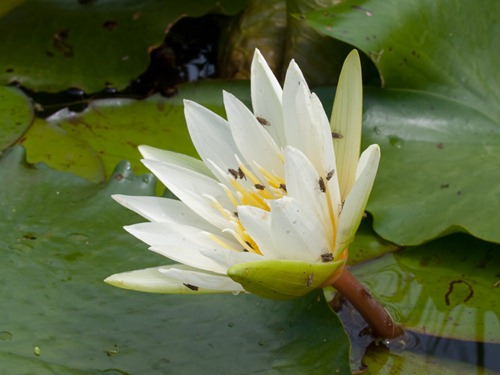 |
|
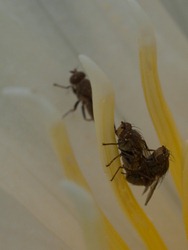 |
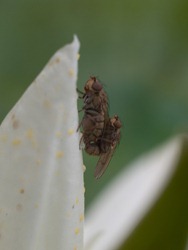 |
Having fun
Hemipteran under attack?
This juvenile bug has a queer appearance. First of all, it is covered in tiny, blue-ish tufts. Secondly, there are two white ‘eggs’ along its midline. I’m not sure whether either of these structures are actually part of the bug, or if they are from an outside source – fungus/parasitoid.
There are no tufts on the eyes, and they appear rather uniform in distribution about the rest of the body, so they might be part of the bug. The ‘eggs’, on the other hand, look a bit more dangerous for this guy… It’s be cool to see a couple of wasp larva hatch out and burrow in.

